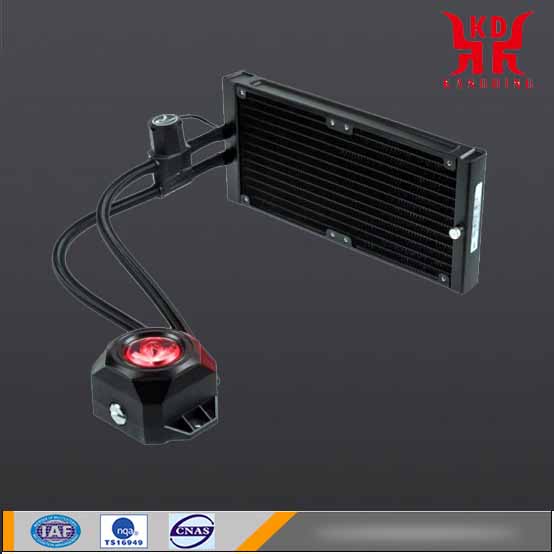
The welding technology of the heat sink includes: reflow welding technology, high frequency metal welding, Flexible manufacturing process, forging process.
For the reflow soldering technology of heat sinks, the biggest problem of the traditional junction type heat sink is the problem of interface impedance, and the reflow soldering technology is an improvement to this problem. In fact, the process of reflow soldering is almost the same as that of traditional bonding heat sinks, except that a special reflow oven is used. It can accurately set the welding temperature and time parameters. The solder is made of lead-tin alloy, so that the welding and the metal to be welded are fully contacted, thereby avoiding the leakage of welding and ensuring the connection of the fin and the base as close as possible. The thermal resistance of the interface is minimized, and the melting time and melting temperature of each solder joint can be controlled to ensure the uniformity of all solder joints. However, this special reflow furnace is very expensive, and most motherboard manufacturers use it, while radiator manufacturers rarely use it. Generally speaking, radiators using this process are mostly used for high-end, and the price is relatively expensive.

Flexible manufacturing process of heat sink
In the flexible manufacturing process, the copper or aluminum sheet is folded into an integral fin with a forming machine, and then the upper and lower bottom plates are fixed with a piercing mold, and then a high frequency metal welding machine is used to weld the processed base into a whole. Since the manufacturing process is continuous bonding, it is suitable for making heat sinks with high thickness-to-length ratio, and because the fins are integrally formed, it is beneficial to the continuity of heat conduction. The thickness of the fins is only 0.1mm, which can greatly reduce the material requirements and obtain the largest heat transfer area within the allowable weight of the heat sink. In order to achieve mass production and overcome the interface impedance when the materials are joined, the upper and lower bottom plates are used for simultaneous feeding in the manufacturing process, and a consistent process is automated. The upper and lower bottom plates are joined by high-frequency fusion welding, that is, material fusion is used to prevent the generation of interface impedance, so as to establish high-strength, closely spaced heat sinks. Because the manufacturing process is continuous, mass production can be achieved, and the heat transfer efficiency can be increased due to the significant reduction in weight and improved performance.

Forging process technology of heat sink
The forging process is formed by heating the aluminum block to the yield point and filling the mold with high pressure. Its advantage is that the height of the fins can reach more than 50mm and the thickness is less than 1mm, which can obtain the largest heat dissipation area in the same volume. Moreover, forging is easy to obtain good dimensional accuracy and surface finish. However, during forging, due to the necking phenomenon during the cooling plastic flow, the heat sink is prone to uneven thickness and height, which affects the heat dissipation efficiency. Due to the low plasticity of metal, it is easy to crack when deformed, and the deformation resistance is high. Large tonnage (over 500 tons) forging machinery is required, and the high cost of the product is also due to the high cost of equipment and molds. And because of the high cost of equipment and molds, the cost is too high unless mass production.
There are not many manufacturers in the world capable of manufacturing cold forged heat sinks. The most famous is Japan's ALPHA, and Taiwan is Taisol, MALICO Taiye Technology. The advantage of cold forging is that it can produce heat sinks with a larger heat dissipation area than aluminum extrusion. And because the aluminum extrusion manufacturing process is stretching, the aluminum metal structure is expanded in the horizontal direction, while the cold satin direction is compressed vertically. Therefore, in terms of heat dissipation, cold forging has a greater advantage, but the disadvantage is that the cost is high, and there are not many manufacturers that have the technology to manufacture.









